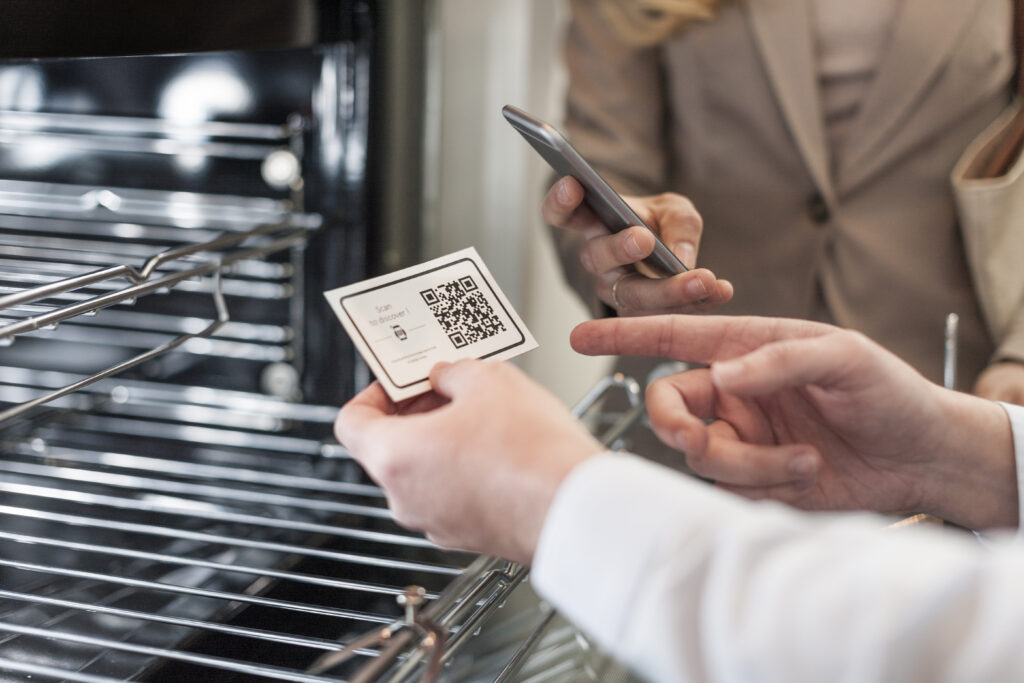QR-codes Are Ideal for Ticketing
More and more organizations are turning to QR-codes for issuing tickets. It makes sense: for customers it’s easier, and for companies it’s more efficient and cost-effective. But how exactly do QR-code tickets work, and how can you create them yourself? QRcode.me explains.
In short
-
QR-code tickets are ideal for both businesses and customers.
-
Put simply, there are two ways to create QR-code tickets: a budget-friendly, simple option, and a more automated, hands-off option.
-
In the future, generating ticket QR-codes will become even easier, and they will be usable by both the organizer and the visitor.
Why QR-code tickets?
Using QR-codes for ticketing comes with unique benefits:
-
Efficient: QR-codes can be scanned instantly, which improves crowd flow at events. Tickets can also be generated in seconds, saving valuable time.
-
Reliable: QR-codes are less prone to errors than paper tickets or manual entry. They can be scanned with even the simplest devices.
-
Affordable: Creating and sending QR-codes digitally is far cheaper than printing and distributing paper tickets or maintaining complex ticket systems.
-
Secure: Every ticket has a unique QR-code that can only be scanned once, making fraud virtually impossible.
-
Analytics: As an organizer, you can easily track scan statistics—such as attendance levels and peak times.
How does it work?
You can create QR-code tickets in two main ways:
Option 1: Landing page tickets
This method is ideal when:
-
You don’t issue massive amounts of tickets (fewer than ~1000).
-
You want to stay in control of ticket management.
-
You’re looking for a budget-friendly solution.
How it works:
You create a QR-code of the type “landing page.” The QR-code can contain details such as name, date of birth, and issue/expiry dates. When scanned, these details appear, allowing you to check if the ticket is valid.
Note: at the moment, landing page QR-code tickets are only available upon request. Interested? Contact us.

Option 2: Ticketing platforms
This method is ideal if:
-
You’re issuing large volumes of tickets.
-
You need strict security and anti-fraud measures.
-
You want the ticket verification process to run automatically.
In this case, each QR-code ticket is simply a unique random code (for example: X03). When scanned, the system checks whether ‘X03’ exists in its database, and then marks it as “used,” preventing duplicate scans. The QR-code itself is therefore not very special; the magic lies in the database underneath it.
The platform also stores data such as:
-
How many tickets were sold.
-
When they were sold.
-
How many tickets were purchased per order.
Some platforms even let you view these analytics to optimize your marketing efforts. Well-known providers of these systems include Eventix, WeTicket, and Ticketmaster.

A simplified version of a QR-code ticket database.
What’s next?
QR-codes are finding more and more applications, and ticketing is one of the most promising. Both businesses and customers benefit from it.
Soon, it will even be possible to generate a single QR-code that works both ways: customers can scan it for product information, while businesses can use the same code for ticket validation or payments. This next step in QR-technology is coming soon—and we’ll be offering it in the future as well. Want to learn more? Click here.
FAQ
For dynamic QR-codes we currently offer the types link, video, audio, pdf, text, image, vCard, Review and social media.
For static QR-codes we offer the types: Link, text, vCard, PDF, image, audio, email, location, phone, SMS, Whatsapp, Wifi, event, and PayPal.
No, at QRcode.me all QR-codes work indefinitely; so both free and premium, and both static and dynamic variants never expire.
1 exception to clean up the system. If your dynamic QR-code is not scanned (free version) for over 3 months it will be archived. You will receive a warning in advance.
You can create QR-codes here.
This is very easy with our QR-code generator, and works as follows:
At QRcode.me you can choose to edit the colors, block patterns, the edges, insert your own logo, add a customized frame, adapt the quality, choose a size, and more. With dynamic QR-codes you can even enter a customized link which everyone will see when scanning your QR-code. There are a lot of options to make your QR-code perfect! Looking for more explanation about all our options and how to use them? Click here.

